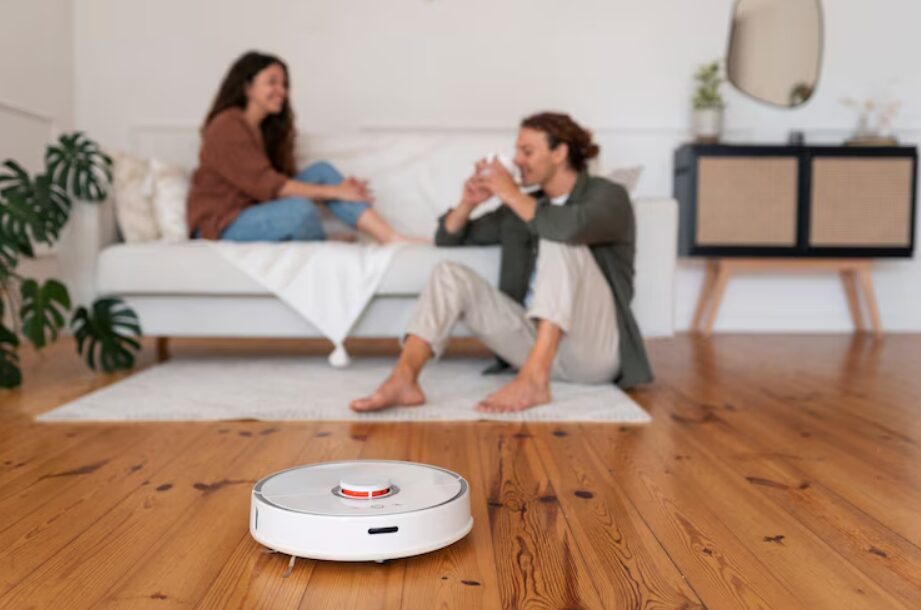Robot vacuums have moved from novelty gadgets to essential home appliances, transforming the way we clean our living spaces. With advanced technology, powerful suction, and intelligent navigation, these compact machines promise spotless floors with minimal effort. Whether you’re a busy professional, a pet owner, or simply someone who values convenience, a robot vacuum can be a game-changer. Let’s explore what makes robot vacuums so popular, how they work, and what to consider before bringing one home.
The Rise of the Robot Vacuum
The concept of automated cleaning isn’t new, but recent years have seen robot vacuums evolve rapidly. Early models offered basic cleaning and simple navigation, often bumping into furniture or missing spots. Today’s robot vacuums, however, are equipped with advanced sensors, mapping technology, and even app controls, making them smarter and more efficient than ever before.
Major brands have developed models that not only vacuum but also mop, empty themselves, and adapt to different floor types. This leap in technology has made robot vacuums a practical choice for households of all sizes and lifestyles.
How Robot Vacuums Work?
At their core, robot vacuums operate using a combination of sensors, motors, and algorithms. They navigate your home, detect obstacles, and clean floors autonomously. Most models feature a circular or D-shaped design, allowing them to access tight corners and edges.
Modern robot vacuums use laser sensors and AI-based systems to create a 3D map of your home. This mapping enables them to plan efficient cleaning routes, avoid obstacles, and remember where they’ve been. Some even have cameras or advanced navigation systems that allow them to move around toys, cords, and furniture with ease.
Key Features That Set Robot Vacuums Apart
One of the main attractions of robot vacuums is their time-saving capability. Once programmed, they keep your floors tidy with little to no intervention. Many models offer customizable cleaning modes—such as spot cleaning for spills, edge cleaning for baseboards, and whole-floor cleaning—to suit various cleaning needs.
Smart home integration is another standout feature. With Wi-Fi connectivity and companion apps, you can schedule cleanings, set virtual boundaries, and monitor progress from anywhere. Voice control through Alexa, Google Assistant, or Siri is also available on many models, making operation even more convenient.
Some advanced robot vacuums come with self-emptying stations, transferring dust and debris into a larger bin so you only need to empty it every few weeks. Premium models even include mopping functions, electronic water flow control, and self-cleaning brush rolls, bringing you closer to hands-free home maintenance.
The Benefits of Robot Vacuums
Robot vacuums offer a range of advantages for modern households. They save time and effort, allowing you to focus on other tasks or simply relax. Their ability to clean under furniture and in hard-to-reach places ensures a more thorough clean than many traditional vacuums.
For pet owners, robot vacuums are especially useful, as they can keep up with daily shedding and help reduce allergens. Many models are equipped with HEPA filters and strong suction to capture fine dust and pet hair.
Another benefit is the scheduling feature. You can set your robot vacuum to clean when you’re not home, returning to a spotless floor without lifting a finger. Some models even send app alerts when maintenance is needed, making upkeep straightforward.
Considerations Before Buying a Robot Vacuum
While robot vacuums are incredibly convenient, there are a few things to consider before making a purchase. Battery life varies between models, with premium versions offering up to 240 minutes of runtime, allowing them to clean large homes in one session. Most robots will return to their dock to recharge and then resume cleaning if the battery runs low mid-job.
Cleaning efficiency can differ depending on your floor type and the model you choose. Some vacuums excel on hard floors but may struggle with thick carpets or certain debris. It’s important to check reviews and specifications to ensure the robot matches your home’s needs.
Maintenance is another factor. While self-emptying and self-cleaning features reduce manual effort, you’ll still need to replace filters, empty dustbins, and occasionally clean sensors or brushes.
The Future of Home Cleaning
The robot vacuum market continues to innovate, with new models featuring AI-driven navigation, advanced mopping systems, and even robotic arms for moving obstacles. As technology advances, these devices are becoming more affordable and accessible, making automated cleaning a reality for more households.
Smart home integration is also improving, with robots now able to map multiple floors, set “no-go” zones, and provide detailed cleaning reports. As battery technology and energy efficiency improve, robot vacuums will only become more powerful and versatile.
Robot vacuums represent a leap forward in home convenience, offering a blend of smart technology and practical cleaning power. They are ideal for anyone looking to save time, maintain cleaner floors, and embrace the future of home automation. With a wide range of models and features available, there’s a robot vacuum to suit every lifestyle and budget.
If you’re ready to reclaim your time and enjoy a consistently clean home, investing in a robot vacuum may be the smartest move you make this year. Let the robots do the work—your spotless floors await.





